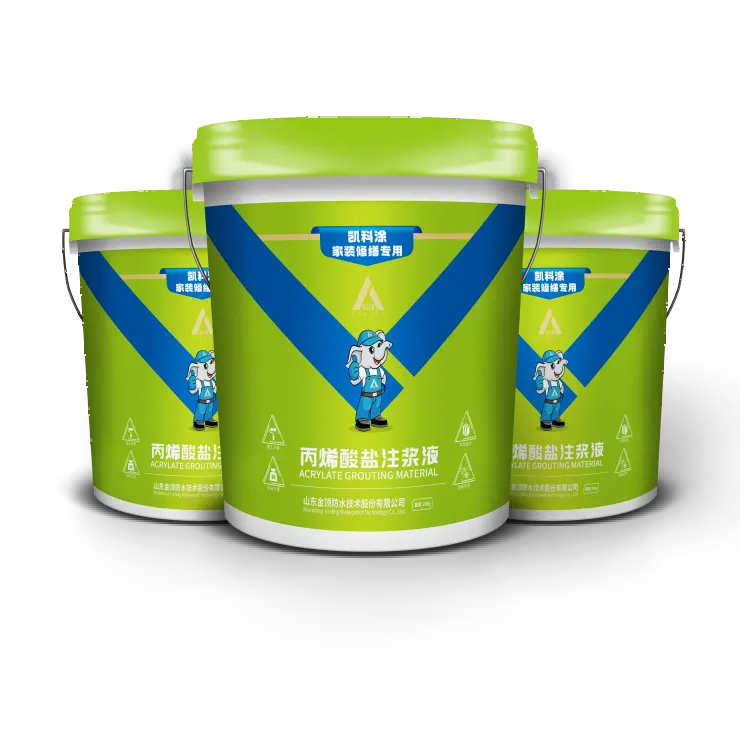הכרת ההשפעה של פתרונות צבע רצפות תעשייתיות
במחסנים. פתרון הקידוד התעשייתי הזה שינה את הדרך בה מנהלי מתקנים תופסים את הטיפול בפאות בטון, תוך הצעת יתרונות שמעבר לשיפור אסתטי פשוט. צבע רצפה במחסנים. פתרון הקידוד התעשייתי הזה שינה את הדרך בה מנהלי מתקנים תופסים את הטיפול בפאות בטון, תוך הצעת יתרונות שמעבר לשיפור אסתטי פשוט.
היישום האסטרטגי של צבע רצפה במחסנים פותר אתגרים תפעוליים רבים תוך כדי משלוח ערך ארוך טווח למערכי תחזוקה ובעלים של מפעלים. מהגברה של פרוטוקולי ביטחון ועד לשיפור יעילות תפעולית, תועלות של ציפוי רצפות מתאימות משתרעות לאורך כל מערכת היחסים של המחסן.

מאפייני ביצועים ו הגנה
עמידות כימית ופיזית
צבע רצפות תעשייתי מספק עמידות יוצאת דופן בפני כימיקלים אגרסיביים הנפוצים בסביבות מחסן. בין אם מדובר בדליפת שמן, נוזלי ניקוי כימיים או תמיסות תעשייתיות, רצפות מצופות כהלכה שומרות על שלמותן מבלי להתנוון. התרכובת המותאמת יוצרת שכבת הגנה שמונעת מהגעות של חומרים לתוך תת-הבסיס של הבטון.
עמידות לפגיעות היא יתרון חשוב נוסף של צבע רצפות למתקנים תעשייתיים. מכונות כבדות, כלים שנפלו ותדרוך מתמדת עלולות לפגוע במשטחים שאינם מוגנים. ציפויי הרצפה האיכותיים בולמים ומפזרים את כוחות הפגיעה, מפחיתים את הסיכוי ל трקים, פגיעות ו thiệtקים במשטח שעלולים לפגוע בביטחון התפעולי.
עמידות ואריכות ימים
تركיבים מתקדמים של צבעי רצפה פותחו במיוחד כדי לעמוד בתנאים הקשים של פעילות במתקנים תעשייתיים. מערכת הציפוי החזקה יוצרת משטח המכיל את הבلى הנובע מתנועה מתמדת של טרולי שילוף, גרירה של פאלאטים ותדרוך כבדה. קיימא זו מאפשרת הפחתת דרישות התפעול ומערכת תחזוקה נדירה יותר, עם מרווחים ארוכים יותר בין שכבות צבע חדשות.
אריכות החיים של צבע ריצפה המופנה כראוי מייצגת השקעה משמעותית. למרות שהוצאות ההתקנה הראשוניות עשויות להיראות גדולות, אורך החיים המורחב וצורך מופחת בזקן גורמים להורדת סך עלויות הבעלות לאורך זמן. מערכות רבות של ציפויי ריצפה תעשייתיים יכולות לשמור על תכונות הביצוע שלהן במשך שנים, גם בתנאי שימוש כבדים.
בטיחות ושדרוג מראה
התנגדות להחלקה וסמנים לבטיחות
אחת התרונות המרכזיים של צבע ריצפה במפעלים היא היכולת לשלב חומרים ייחודיים המעניקים התנגדות להחלקה במערכת הציפוי. חומרים אלה יוצרים משטח טקסטורלי שמשמר אחיזה גם ברוטב, ומקטין משמעותית את הסיכון לתאונות החלקה ונפילה. תכונה זו חשובה במיוחד באזורים המורגלים לחום או ריסוקים.
סימונים ביטחוניים וזיהוי אזורי הופכים להיות נראים בבהירות כאשר הם משולבים במערכת ריצוף הרצפה. מסילות הליכה, אזורים מסוכנים ואזורים לשמירה יכולים להיות מסומנים ב permanente באמצעות צבעים או דפוסים שונים בצבע ריצוף. מערכת ארגון ויזואלית זו עוזרת בשמירה על זרימת תנועה תקינה ומשפרת את הבטחה במקום העבודה.
הפניית אור וראיה
התכונות ההחזרתיות של צבע ריצוף מחסנים תורמות משמעותית לשיפור יעילות האור. צבעים בהירים יכולים להגביר את ההחזרת האור בסביבה ב-300%, ובכך להפחית את צריכת האנרגיה הנדרשת לתאורה מלאכותית. בהירות מוגזמת זו יוצרת סביבת עבודה נראית יותר, מקלה על עייפות העיניים ומשפרת את תפוקת העובדים.
שיפור הראיה תורם גם להפחתת שיעור התאונות ולשיפור בקרת האיכות. באזורים של בחירה ואזורים לאיסור, תאורה מוגזמת עוזרת לעובדים לזהות מוצרים בצורה מדויקת יותר, ובכך מקילה על שגיאות ומשפרת את דיוק מילוי ההזמנות.
יתרונות בטיחות וניקיון
פרוטוקולי ניקיון קלים לביצוע
צבע הרצפה יוצר משטח חסום המונע מהאבק, לאדמה ולפסולת להטמע בתוך הבטון. המאפיין שאינו חדיר גורם לכך שניקיון שגרתי נעשה קל יותר ויעיל יותר. שפיכות ניתן לנקות במהירות מבלי להשאיר כתמים, בעוד שאבק ופסולת ניתן לנקות על ידי מטינה או מטלול מבלי שיהיה צורך בשיטות ניקיון אגרסיביות.
המשטח החלק והחסום מקטין גם את הצטברות החיידקים והזיהומים האחרים, מה שתרום לסביבת מחסן היגיינית יותר. זוהי חשיבות רבה במיוחד במבנים העוסקים בעבודה עם מוצרים מזון או חומרים רגישים בהם ניקיון הוא בעל חשיבות מכריעה.
הקטנת דרישות תחזוקה
צביעה נכונה של רצפות מפחיתה משמעותית את הצורך בצעדים אינטנסיביים של תחזוקה. השכבת ההגנה מונעת מבעיות בטון נפוצות כמו אבק, ניקור ושחיקה של פני השטח. הפחתה בתוחלת תחזוקה מובילה ישירות לחיסכון כלכלי ויעילות תפעולית מוגזמת.
תפעול תחזוקתי שגרתי הופך להיות פשוט ופשוט יותר, ובהחלט דורש רק ניקיון בסיסי ובדיקות מזדמנות. האיכות העמידה של צפפות הרצפה המודרניות פירושה שצביעה חוזרת או תיקונים נדרשים לעיתים נדירות, ומאפשרת לצוותי תחזוקה להתמקד במשימות קריטיות אחרות.
היקשים סביבתיים וכלכליים
פתרונות בר קיימא
תבניות צבעים מודרניות לרצפות כוללות בהדרגה רכיבים ידידותיים לסביבה, המפחיתים את תרכובות hữu פלטניות (VOCs) והשלכות מזיקות אחרות. פתרונות אלה החוסנים לסביבה שומרים על רמות ביצוע גבוהות, תוך הפחתת ההשפעה הסביבתית במהלך היישום ומשך כל תקופת השירות.
אריכות החיים המוגדלת של מצעי ריצפה באיכות גבוהה מקטינה את תדירות הפנייה מחזורית, ובכך מקטינה את הרגל הסביבתי הכולל של תפעול תחזוקת מחסנים. בנוסף, שיקוף אור משופר יכול להוביל לצריכת אנרגיה מופחתת, ותורם ליעדי קיימות רחבים יותר.
ניתוח ביעילות עלות
בעוד שההשקעה הראשונית בצבע רצפה איכותי עשויה להיות משמעותית, היתרונות הכלכליים לטווח ארוך מצדיקים את ההוצאה. עלויות תחזוקה מופחתות, יעילות תפעולית משופרת וחיי שירות ארוכים יותר תורמים לתשואה חיובית על ההשקעה. מנהלי מתקנים מגלים לעתים קרובות שרצפות שצופו כראוי מחזירות את עצמן באמצעות צמצום צורכי התיקונים ושיפור הפרודוקטיביות.
מניעת פגיעה בקונקרט באמצעות מצע הגנה יכולה להציל סכומים ניכרים בקשר לעשויות תיקון או החלפה. בנוסף, סביבת עבודה משופרת יכולה להוביל לקצב תאונות מופחת ולחשבונות ביטוח נמוכים יותר.
שאלות נפוצות
כמה זמן בדרך כלל נמשכת דה ריצפת של מחסנים?
תוחלת החיים של צבע רצפות במחסנים היא בדרך כלל בין 5-10 שנים, תלוי בגורמים כגון נפח התנועה, תactices תחזוקה, וкачество ההתקנה הראשוני. ציפויים תעשייתיים כבדים יכולים להימשך אפילו יותר כאשר הם מטופלים כראוי ומוגנים מנשאوى מוגזמת.
האם יש צורך בהכנה לפני יישור צבע רצפת מחסנים?
הכנה מתאימה של פני השטח היא חיונית, וכוללת בדרך כלל ניקוי יסודי, תיקון כל נזק קיים, ופעולה מכאנית כמו סילוק באבקת פליז או גריסה יהלומית. פני השטח של הבטון חייבים להיות יבשים לחלוטין וחופשיים מכל זיהום לפני תחילת היישור.
האם ניתן להמשיך את פעילות המחסן במהלך יישור צבע הרצפה?
בעוד שחלק מהפעולות עשויות להידרש להעתיק באופן זמני, מערכות ציפוי רצפה מודרניות מאפשרות לעתים קרובות יישום חלקי וזמני ייבוש מהירים. מתקנים רבים יכולים לשמור על פעילות חלקית במהלך ההתקנה על ידי תכנון קפדני של לוח הזמנים של היישום ושימוש בפורמולות בעלות ייבוש מהיר.
מה גורם לצבע רצפות תעשייתי להיות שונה מצבע רגיל?
צבע רצפות תעשייתי מיוצר במכוון עם אחוז גבוה יותר של חומר מוצק, תכונות דבקות מתקדמות ועמידות מוגזמת. לציפויים המותאמים הללו יש פולימרים מתקדמים ותבניות שמספקות עמידות כימית, הגנה מפני פגיעות ועמידות לזמן רב בפני בלאי, תכונות שאינן קיימות בצבעים רגילים.

